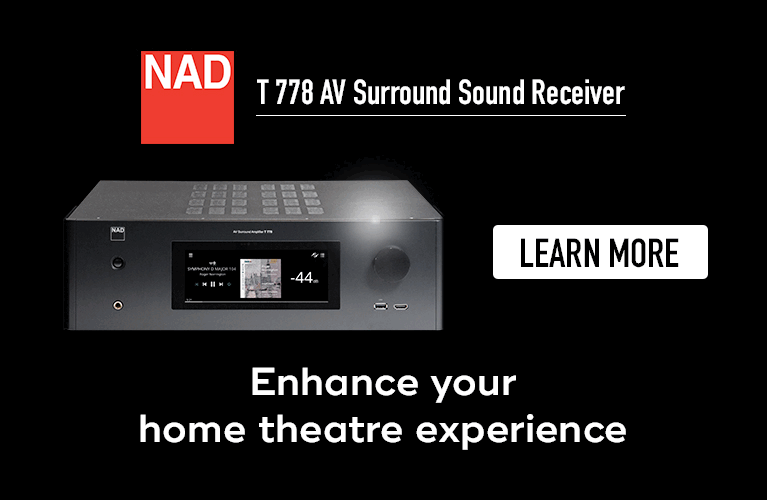Note: Measurements taken in the anechoic chamber at Canada's National Research Council can be found through this link.
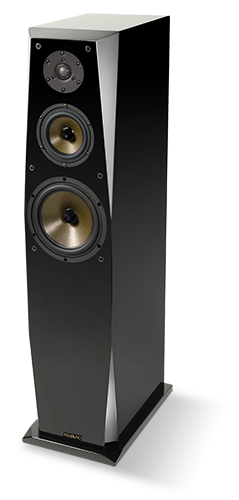 My stereo evolves. It changes, adapts, improves itself (work with me here), casts off mutations that don’t benefit the whole. As my mind drifts back to my first real system -- an NAD 7240PE receiver and Clements Audio Little D speakers -- I remember how I flailed around attempting to improve the sound. I did it in isolation, before the days of the Internet, and with only the dubious assistance of Stereo Review magazine (in retrospect, that mag was no help at all).
My stereo evolves. It changes, adapts, improves itself (work with me here), casts off mutations that don’t benefit the whole. As my mind drifts back to my first real system -- an NAD 7240PE receiver and Clements Audio Little D speakers -- I remember how I flailed around attempting to improve the sound. I did it in isolation, before the days of the Internet, and with only the dubious assistance of Stereo Review magazine (in retrospect, that mag was no help at all).
So I’d wait with much angst for the Thursday release of Buy & Sell -- to get the earliest copy, I’d drive across town to the store close to the paper’s headquarters -- and scour the Stereo section, looking for a bargain with which to give my system an evolutionary advantage.
Thirty years later, the evolutionary process is far more frenetic. Because I’m a reviewer, my system is in constant flux, and the changes are not always for the better. I generally choose gear for review that I think stands a good chance of falling within my audio worldview. As do you, I listen for pleasure, so the thought of spending one or more months with a component I don’t enjoy is not an endearing prospect. This doesn’t mean that I cherry-pick all of my review subjects. Maybe half the time, the gear is thrust on me by my editors, who will send me a component about which I know nothing. The rest of the time, I’m on my own recognizance.
Throughout the 15 or so years I’ve been writing for SoundStage!, countless components have cycled through my system. Sometimes one of them is better than my own gear, other times not. I’ve had a number of repeat visitors -- components from the same manufacturer -- and perhaps the most frequent has been Focus Audio. In 2005, the FS-888 loudspeaker arrived and began what could well be described as a long-distance love affair. Aural memories are notoriously untrustworthy, but I can still hear that speaker in my mind’s ear. I just loved the soft shimmer of the FS-888’s tweeter, and its elegant smoothness through the midrange. I’ve often thought that, when I tire of this gig, I’ll most likely settle down with a pair of speakers just like that.
Over the subsequent decade I reviewed two more speaker models from Focus Audio, along with their new Liszt Sonata integrated amplifier. Each of those components spoke to me in a way that few others have managed to do. I could have happily ended my review career on the notes they played. I could have, in audiophile terms, died happy.
So I kept Focus in . . . focus. They’re based in Markham, Ontario, very close to my house, and it’s fairly simple for me to stay in touch with them, and gently prod them to remember my name when they bring out a new and noteworthy speaker.
Persistence has paid off. Right here, right now, I’m listening to a pair of their new FP90 BE speakers, a model in Focus’s Prestige Series, one down from the top. It’s a fairly large floorstanding speaker that retails for a substantial (to me) $13,800 USD per pair.
Description
I reviewed the original Prestige FP90 back in 2009, but since then it’s gone through two iterations; the FP90 BE is the second. Focus is constantly refining their products, but for the FP90 BE, the revision of note is the shift to a beryllium tweeter made by Scan-Speak.
Focus Audio’s speaker cabinets are made in China, but all internal parts and drivers are top-shelf multicultural components. The speakers are engineered and assembled here in Canada, and the principals, Kam Leung and Roger Kwong, are clever, dedicated audiophiles. Listeners first and foremost, the three of us have spent a number of evenings changing up equipment, working to get the best from whichever pair of their speakers happen to be in the Thorpe house.
The FP90 BE is large, and one striking, elegant speaker. At 43”H by 9.5”W x 15.5”D, the speaker is only as wide as it needs to be to accommodate its 9” woofer, but still could easily dominate a room. What saves it from being the kind of speaker that interior designers love to hate is its flawless black lacquer (it’s your only choice of finish). When I say flawless, I mean it. No matter the lighting, regardless of how I moved back and forth looking for inclusions, the FP90 BEs remained light-sucking, Kubrick-esqe monoliths. We always hear about piano-black lacquer, but I’d never actually seen a new, polished, high-end piano in the flesh. So I drove across town to Remenyi House of Music, one of Toronto’s highest-end music stores, and wandered around a while, dragging my hand along the lids of some obscenely expensive pianos, and contrasting their finishes to that of the Focus speakers in my basement. It didn’t matter whether I moved in close or stood back -- I could see no functional or aesthetic difference between the piano blacks produced by aged, fourth-generation German craftsmen and by Focus Audio’s paint guys.
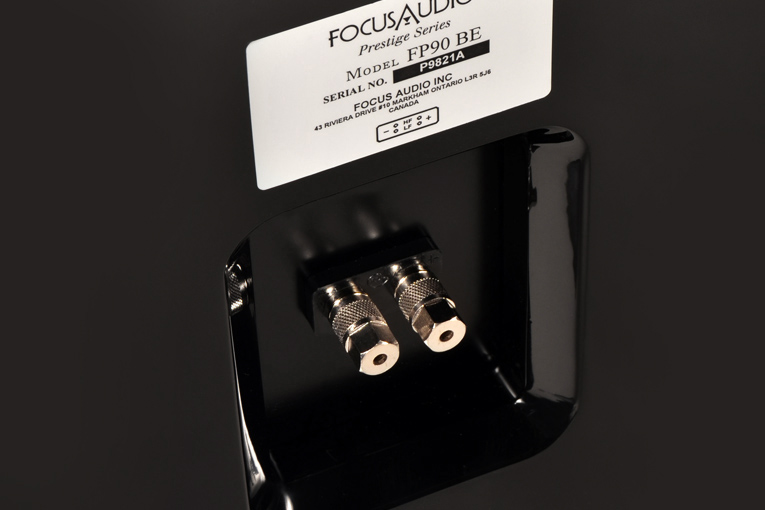
The FP90 BE is a straight-up, rock-solid, well-braced, ported box. Around back, the port’s mouth is beautifully radiused, and blends into the cabinet without join. The high-quality connectors are placed quite high on the rear panel, which isn’t exactly optimal -- your cables need to reach up, up, up -- and detracts from the appearance. I’d rather have the binding posts down low. Another gripe: the grilles attach by ye olde-schoole method of peg-and-hole friction fit. In this day of such high-tech miracles as magnets, there’s no excuse for warting up such a nice baffle as this, especially considering the FP90 BE’s healthy retail price.
Each speaker sits on a small plinth, into which fit viciously sharp stainless-steel spikes. As my floors are cheap laminate, and each FP90 BE weighs a hefty 88 pounds, I refrained from installing the spikes. The flat bottoms of the speakers mated very well with the ground, and the speakers felt very solid. I wasn’t worried.
Beryllium is as stiff as all get-out and very light, the combination of properties that is the holy grail of tweeter-dome design. The metal is also extremely toxic and thus very expensive to work with. It’s a luxury material, and, despite being found in more and more speakers these days, still an element of cutting-edge design. The remaining drivers -- a 5.5” Nomex-Kevlar Hexacone midrange and a 9” woofer -- are made by Eton, of Germany.
It isn’t a magic recipe: The FP90 BE is an extremely attractive, well-designed speaker made from high-quality parts. There’s no mystery to it beyond the passion that Focus so clearly injects into their products. That’s enough.
Setup and system
Setup was straightforward. I’ve had enough direct-radiating, rear-ported speakers in my room to instinctively know where they need to go for best sound: 34” out from the front wall, 7’ apart, and 8’ from the listening position seemed to do the trick, and I never felt the need to fuss with their positioning. A little toe-in firmed up the center image just right.
Focus specifies the FP90 BE as an easy 8-ohm load, and fairly efficient at 87dB. These specifications seem utterly reasonable: my Audio Research VT100 power amp had no difficulties driving them, and neither did Focus Audio’s own Liszt Sonata integrated, which, with two EL34 tubes per channel, isn’t exactly an arc welder.
Sound
I’d previously had some exposure to Focus’s implementation of a beryllium tweeter. The prototype speakers that I used to evaluate the Liszt Sonata were similar in design to the FP90 BE, so I had an idea what to expect. I’ll always associate Focus with the Scan-Speak Revelator tweeter, which they used in the FS-888. That unbelievably sweet-sounding driver utterly enchanted me.
The FP90 BE’s tweeter sounded nothing like the Revelator in the FS-888. So if I loved the older speaker’s tweeter, I must have hated the one in the FP90 BE, right? Nope. That’s one of the wonderful things about audio -- there are so many ways to skin a cat. Planar-magnetics, electrostatics, omnidirectionals, direct radiators -- I like all of those speaker technologies, and have owned examples of each. Being partial to one audio technology doesn’t preclude enjoying others.
I could easily overflow my available buffer with descriptions of how the FP90 BE’s beryllium tweeter conveyed musical information. In summary, it presented music with clarity and extension, and was utterly neutral in its rendering of textures. This clear, extended sound was completely at odds with some preconceptions I’ve held tight to my chest over the years. Time to let them go, Jason. It sounded to me as if the FP90 BE’s treble was flat and neutral, and that it will likely measure as such. This isn’t surprising -- Focus competently designs their products. Still, “flat, neutral, and extended” can be -- to me, specifically -- a recipe for listening fatigue.
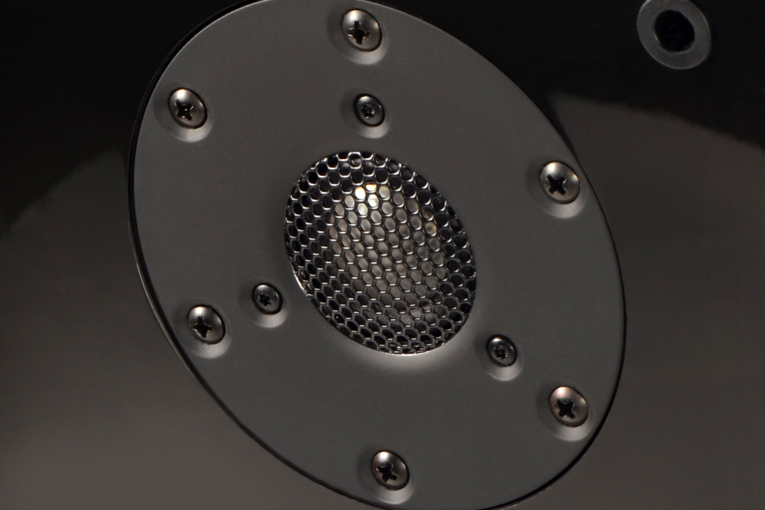
Perhaps by their rigid nature, metal domes seem able to go higher in the highs than can soft-dome tweeters. But along with that extension, you often get a dose of grit. Some listeners associate that grit with detail and increased precision (who am I to argue with a subjective evaluation?), but I’m not sold on this correlation. To me, a metal dome that extends the highs often (but not always) sounds dirty and stressed out, especially when you turn up the volume. But this tweeter in this speaker utterly and totally smashed that preconception.
According to Focus’s Kam Leung, the FP90 BE’s midrange is crossed over to the tweeter at around 2kHz -- quite low, which serves to make the midrange’s job easier by making the tweeter work harder. “The tweeter can take it,” Leung stated. No doubt.
I recently spent an extremely pleasant evening comparing the new Led Zeppelin reissues with my German, Japanese, and (yuck!) domestic pressings. Marc Dixon, our sometime lodger (don’t ask, it’s complicated), is a rabid record collector who’s been raving about the new Led Zep LPs, so I recently picked up the first four from Tiny Records, a newfound local record store here on the east side of downtown Toronto. While I understand there’s some controversy swirling around the origins of the tapes used to master these LPs, I couldn’t be happier with them. It’s how I always imagined Led Zeppelin should sound. The bass on the new III (LP, Atlantic R1-535341) sounds noticeably fattened up -- a great idea, considering how thin and shrill this music has sounded all its life. But it was the highs that truly seduced me. The opening guitar in “That’s the Way” sounds almost luminescent, and provided a perfect example of what makes the FP90 BE’s tweeter so very special. The thickly layered harmonics in that guitar sound so real through these speakers that I could almost taste them. Shimmer, detail, depth, body -- it was all there, extending north toward the limits of my hearing. (Incidentally, the German pressing of this album [LP, Atlantic ATL 50 002/SD 7201] held up very well, with slightly more soundstage depth but less extension at both ends. The bass that’s there is slightly tighter and better defined, though.)
What was immediately obvious to me, and of extreme import to this review, was the complete absence of any artifacts layered atop those harmonics. I listened to this track several times over the course of this review, and once, when the family and neighbors were out, I cranked the living shit out of my system. Playing that track at such obscene volumes yielded the same reaction: the FP90 BE’s top end refused to harden or sound stressed in any way.
In fact, I found the FP90 BE’s ability to play loud without stress its most endearing feature. I really, really like to listen loud, but I’m so often thwarted by speakers that sound nonlinear at high volumes. They sound fine at medium volumes, then crust up in the treble as the volume rises. That pisses me off. Live rock music is loud, and an audiophile speaker should be able to reproduce something resembling live music, right?
Led Zep III was 1970. Fifteen years later came Kate Bush’s Hounds of Love (LP, EMI 8 21406 1). I’ve been digging into my 1980s records with relish these days, and this EMI Centenary pressing sure sounds swell. I never really took to side 1 of this album -- too commercial for my tastes -- but side 2 paints an enchanting soundscape, sort of how I envisioned Narnia before Disney got its hooks in. “And Dream of Sheep” is delicate and lilting. Bush’s voice is overlaid with a ton of studio-enhanced harmonics, but it’s lovely nonetheless. All through this track, I found myself intimately aware of how the FP90 BE sprayed these harmonics around my room. As I typed that, I remembered having used that same verb, sprayed, to describe the FS-888’s treble dispersion. The difference is that the FP90 BE controls the spray in a way that feels much more coherent than the older silk dome. The older driver’s smoothness is still here in the FP90 BE, but along with it is a control and a precision the FS-888 could never match.
Hounds of Love is a fantastic-sounding record. Through the FP90 BEs I was presented with a wall-to-wall soundstage, excellent depth, and realistic, well-fleshed-out images. Each song blends into the next, with Bush seeming to take a page from Pink Floyd’s Guidebook to Album Construction. As side 2 progresses, it becomes more and more agitated, culminating in a choppy sample of Bush’s voice. The FP90 BE slapped me in the face with this assault, with a quickness to its delivery of transients that brought to my face an intense smile. The midrange and treble snap of this speaker were world class.
Just a bit above I mentioned that the FP90 BE’s midrange has a fairly easy ride. Sitting as it does in a three-way speaker, and having the tweeter take over at a fairly low frequency, lets that mid driver loaf through life with little stress. Whatever the reason, the FP90 BE has a very smooth, natural midrange.
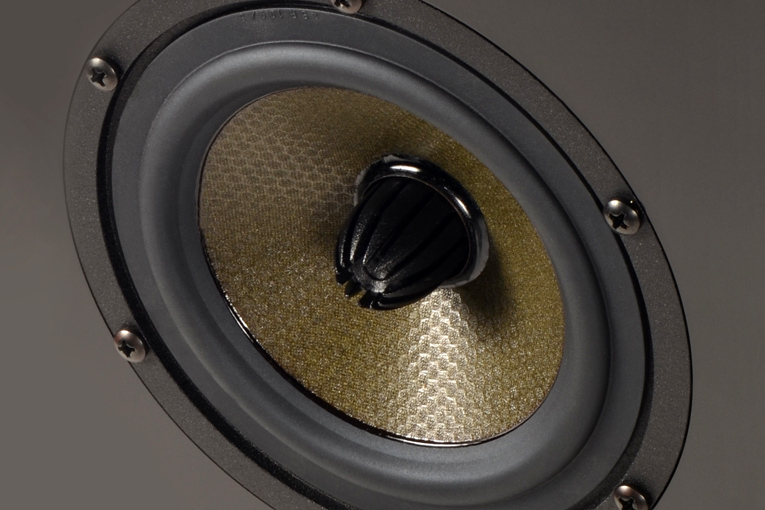
I recently paid a visit to my friend Laura’s house so that we could sift through her parents’ record collection, which she recently inherited. Laura warned me beforehand that it was heavy on polkas and marching bands, but . . . they’re records, right? And we’d have a chance to catch up (she lives out of town). Out of four milk crates’ worth, only a couple caught my eye: two copies of Cheech & Chong’s Big Bambú (her brother’s records, complete with giant rolling paper), and Nancy Sinatra’s Boots (LP, Reprise RS 6202). The latter was naked in its jacket -- no inner sleeve -- and slid out with a gritty rasp. It was beaten up, but I thought I’d try to resuscitate it.
Back home, I ran it through the Spin Clean and slapped it on the ’table. Surprise! Despite a fair number of ticks and pops, it actually sounded quite decent. The record had good bass, but the action was all in the midrange. The album is remarkably well produced, and Sinatra’s voice is richly overlaid with echo. The title track is slinky, with good bounce, and the FP90 BEs made the best of it.
The FP90 BE was very revealing of recording quality and ancillary components, but it let me listen to subpar material without making me feel stupid about it. So it was with Boots: The upper mids sounded just a tiny bit recessed, which might correlate with the lack of stress at high volumes. Lower in the midrange, the FP90 BE was slightly rich -- not enough to color the music, but rather to complement the treble above. So Sinatra’s voice had vibrancy and body, a succulent richness that pulled her from 1966 and placed her right here, right now, between my speakers. Meow!
Continuing along the female-vocals trail, I pulled from the don’t-listen-very-often pile my original copy of Bill Bruford’s Feels Good to Me (LP, Polydor PD1 6149). With Bruford’s boyish good looks staring at me from the cover, I sat down for the full side-1 experience. This album carried me through my formative teenage years, when Annette Peacock’s voice intertwined with my daydreams of those times. It’s a sultry voice, full of wry intelligence and hidden knowledge of concepts I felt I should understand but feared I never would. Very suggestive stuff for a young lad. Feels Good to Me is a studio production but not over the top, and it’s full of fun stuff -- Jeff Berlin is a great bassist, and whatever happened to Allan Holdsworth? What a great guitarist. Anyway, it’s a busy album in places, and the FP90 BE sorted it out and kept all the instruments distinct. Again, I feel that the midrange driver takes most of the credit for this. First, it’s a high-end driver, and Focus uses only the finest crossover components. Also, the narrow bandwidth for which this driver is responsible allows the FP90 BE to take full advantage of these qualities. Just listen (don’t get all sniffy with me about this being a [gasp] progressive rock album . . . it’s really good!) to the interplay between Peacock’s voice and Bruford’s carefully brushed cymbals. The FP90 BE perfectly delineated the space between voice and instrument.
Next up -- Calexico! Spaghetti Western soundtracks blended with spicy Tex-Mex swing. Feast of Wire (LP, Quarterstick QS 78) is the group’s zenith, in my opinion. From an audiophile’s perspective, this album has it all: expansive, fairly natural imaging, deep bass, crisp highs, and, despite all that, great music. “Crumble” is just plain fun. It’s a swinging tune, very Spy vs Spy, and the bass is prominent in the mix. I remember feeling that the original FS-888 was a touch light in the bass -- not thin or really lacking in any way, but the low end wasn’t noticeably, overtly powerful. It served the music and all, but I felt that some audiophiles might feel it lacking, from an I-just-spent-five-figures-and-want-more viewpoint.
The FP90 BE felt as if it reached just a bit deeper, and that its low end had a touch more prominence. Focus Audio speakers, in my experience, are more about serving the music than showing themselves off. Slamming bass is entertaining, but it’s a fine line between dishing out precisely enough juice for the music to sound realistic and satisfying, and pounding out bass lines just because you can. The FP90 BE is in the former camp. That 9” woofer dug deep, I could feel the bass of Calexico’s Volker Zander in my body, and it felt natural, enjoyable, and proper.
During the course of my listening I also employed Anthem's Statement M1 mono amplifiers. They are absolutely fantastic. I’m a tube guy through and through, but I could happily live with the M1s. While not quite as liquid through the midrange as my tubed Audio Research VT100, the Anthems come easily within spitting distance, and add a healthy dollop of control that is most addictive. Still, the FP90 BE’s sound as driven by the M1s was functionally the same as when driven by my VT100. The M1s grip like vises, but the actual quantity and, to a lesser extent, the quality of the bass didn’t much change. All of this indicates that the Focus is a flexible speaker equally at home with tubed or solid-state power.
I’d have been remiss, however, if I hadn’t listened to the FP90 BE through Focus Audio’s own Liszt Sonata integrated amplifier. On paper, a good-size floorstander wouldn’t seem an ideal match for an amp based on EL34 tubes -- especially when you consider that Focus specs the FP90 BE as needing a minimum of 50Wpc, and the Liszt Sonata puts out only 35Wpc.
But there’s more to it than that, and the ungodly size of the Liszt Sonata’s transformers should be the first clue. This amp punches way above its power rating. The Liszt was able to drive the FP90 BEs to way louder levels than I was comfortable listening to for more than a minute or two, and with no compression or lack of dynamics. Don’t for a minute think it’s all about volume with this amp. As I’ve yelled from the rooftops on several occasions, the Liszt Sonata is in the top position for my all-time favorite component, and there’s no questioning the synergy between it and the FP90 BE. If you’re auditioning this speaker, I think you’d be crazy if you didn’t listen to it with this amp.
Conclusion
I feel as if I’ve been listening to the Focus Audio Prestige FP90 BEs for years now. I reviewed Focus’s Liszt Sonata in early 2013, and I had prototypes of Focus’s bookshelf speaker (from which the FP90 BE is vaguely derived) for a long time after that. Then the FP90 BEs segued into my system. So for nearly two years now, more often than not, I’ve had a Focus speaker or amp -- or both -- in my system. It’s been an excellent way to while away 700 days, and my time with the FP90 BE has reaffirmed that there’s likely to be a Focus speaker in my future, if and when I get too old or jaded to continue reviewing.
. . . Jason Thorpe
jasont@soundstagenetwork.com
Associated Equipment
- Analog source -- Pro-Ject RPM 10 turntable, Roksan Shiraz cartridge
- Digital source -- Logitech Squeezebox Touch
- Phono stages -- Aqvox Phono 2 CI, Blue Circle Audio BC703, Simaudio Moon Evolution 610LP
- Preamplifier -- Sonic Frontiers SFL-2
- Power amplifiers -- Anthem Statement M1 monoblocks, Audio Research VT100
- Integrated amplifiers -- Audio Research VSi75, Focus Audio Liszt Sonata
- Speakers -- Definitive Technology Mythos STS
- Speaker cables -- Nordost Frey
- Interconnects -- Nordost Frey
- Power cords -- Nordost Vishnu, Shunyata Research Taipan
- Power conditioners -- Quantum QBASE QB8, Shunyata Research Hydra Model-6
Focus Audio Prestige FP90 BE Loudspeakers
Price: $13,800 USD per pair.
Warranty: Five years parts and labor.
Focus Audio
43 Riviera Drive, Unit 10
Markham, Ontario L3R 5J6
Canada
Phone: (905) 415-8773
Fax: (905) 415-0456
E-mail: contact@focusaudio.ca
Website: www.focusaudio.com






















